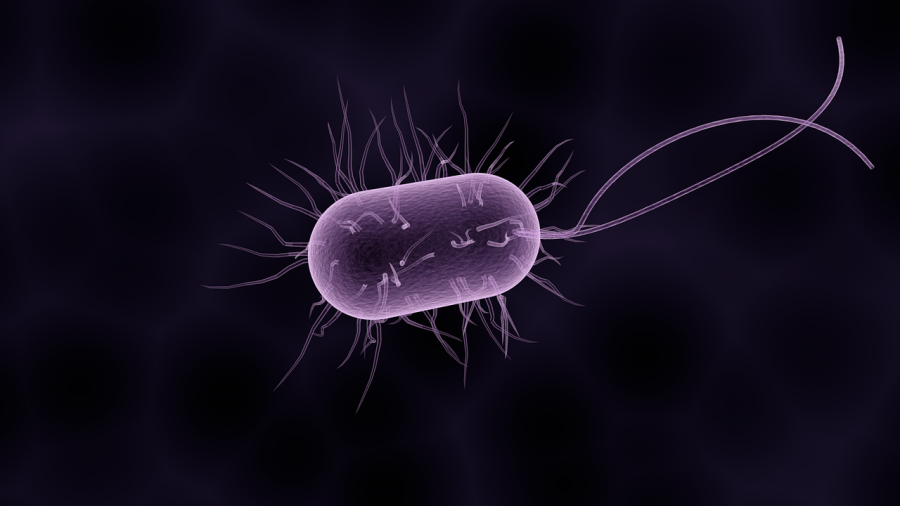
Listeriosis Put on High Surveillance as Deaths Increase to 61 in South Africa
The South African Department of Health has put the Listeriosis outbreak on high surveillance, as 119 new cases have occurred since 5 December 2017, and 61 patients have now died. The Minister of Health is requesting that all pregnant women register on MomConnect, as SA experiences one of the largest outbreaks of Listeriosis recorded in the […]

The South African Department of Health has put the Listeriosis outbreak on high surveillance, as 119 new cases have occurred since 5 December 2017, and 61 patients have now died. The Minister of Health is requesting that all pregnant women register on MomConnect, as SA experiences one of the largest outbreaks of Listeriosis recorded in the world.

“By 5 December 2017, there were 36 people who were traced and were found to have passed on. Now out of the total of 727 laboratory-confirmed cases which we know about, we were only able to trace 134 actual patients. Out of this 134 traced patients, 61 had passed on,” said Health Minister Dr Aaron Motsoaledi.
The Minister was speaking at media briefing in Tshwane on Monday to give progress on the outbreak which has been placed on high alert.
Since the 5th of December 2017, the department has amended the lists of notifiable diseases to include Listeriosis… which allows the department to now track the outbreak, as health workers have to now report all cases of Listeriosis, and their investigation forms have to be submitted to the National Institute for Communicable Diseases (NICD).

For a disease to be notifiable, it has to meet at least two of five qualifying criteria:
1: The disease must be contagious/communicable;
2: Rapid spread;
3: Unusual or unexpected behaviour;
4: Risk of spilling across borders and
5: Risk of restriction to business or travel across borders.
Listeriosis meets at least two of the criteria – rapid spread and unusual or unexpected behaviour, said the Minister.
The Centre for Disease Control and Prevention describes Listeriosis as a serious but treatable and preventable disease caused by the bacterium Listeria monocytogenes.
It is found in soil, water and vegetation. Animal products and fresh produce such as fruits and vegetables can be contaminated from these sources.
Although anyone can get Listeriosis, those at high risk of developing the disease include newborn babies, the elderly, pregnant women, persons with weak immunity such as HIV, diabetes, cancer, chronic liver or kidney disease patients.
The age groups that are most affected are neonates – those in the first 28 days of life – and the age group 15 – 49 years. These two groups comprise 70% of all cases.
World Health Organisation (WHO) South African representative Rufaro Chatora said while this outbreak is the largest recorded, he commends the government’s response.
“Let me congratulate South Africa on its openness in sharing detailed information on Listeriosis. This helps South Africa and the global community at large to protect health, identify, respond and control outbreaks when they occur, in keeping with the provisions of international health regulations.
“Listeriosis outbreaks have happened in many countries including the likes of France, United States and Denmark. This is, however, one of the largest recorded,” said Chatora.
He said the disease is a real challenge in the health sector because of its long incubation time of between three and 70 days and cuts, across different sectors such as agriculture, farming and the food industry.
Spread of Listeriosis in South Africa
As far as the distribution in the country is concerned, Gauteng still has the highest reported cases, followed by the Western Cape. Of the 727 cases, Gauteng has 447 (61%), Western Cape 92 (13%) and KwaZulu-Natal 51 (7%). The remaining 19% is distributed in the remaining six provinces.
Infection with listeria may result in:
Flu-like illness with diarrhoea including fever, general body pains, vomiting and weakness;
Infection of the blood stream, which is called septicaemia and Meningoencephalitis (infection of the brain).
How to keep Listeriosis at bay
The Health Department has advised all South Africans to practice basic food hygiene principles as outlined by the WHO which are:
- Keep clean. Wash your hands before handling food and often during food preparation. Don’t get tired of washing your hands.
- If you are handling or storing raw food, don’t touch already cooked food unless you have thoroughly washed your hands and food preparation utensils. In other words, separate raw from cooked food.
- Cook food thoroughly. Never eat half cooked or uncooked food, especially meat products. Food that does not usually need cooking before eating needs to be thoroughly washed with clean running water. Families with no source of clean running water need to boil their water before domestic use.
- Keep food at safe temperatures. Food that should be kept cold should be refrigerated and food to be served hot should be served hot.
- Use safe water for domestic use at all times and use pasteurised milk products. In situations where pasteurisation is not possible, for own domestic consumption, please boil the milk prior to use.
Members of the public can call the NICD Emergency Operations Centre during working hours on 011 386 2000. Health workers can call the NICD Hotline for Clinical Emergencies after hours on 082 883 9920. – SAnews.gov.za
The Minister of Health is requesting that all pregnant women in private and public facilities should register on MomConnect using their cell phones by dialing *134*550# to get messages on prevention of #Listeriosis @GCISMedia @GovernmentZA @GautengHealth
— National Department of Health (@HealthZA) January 8, 2018
